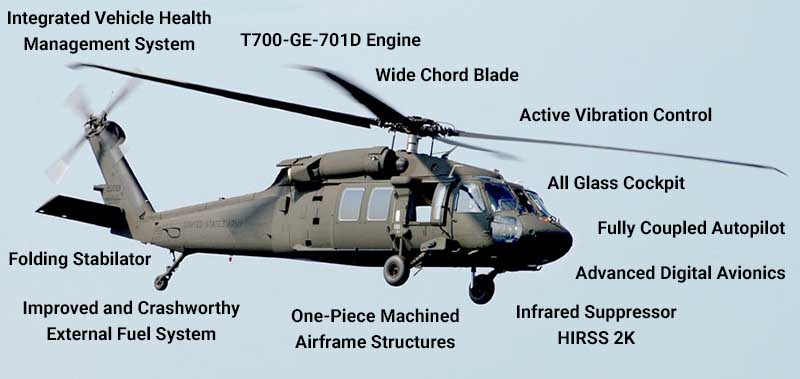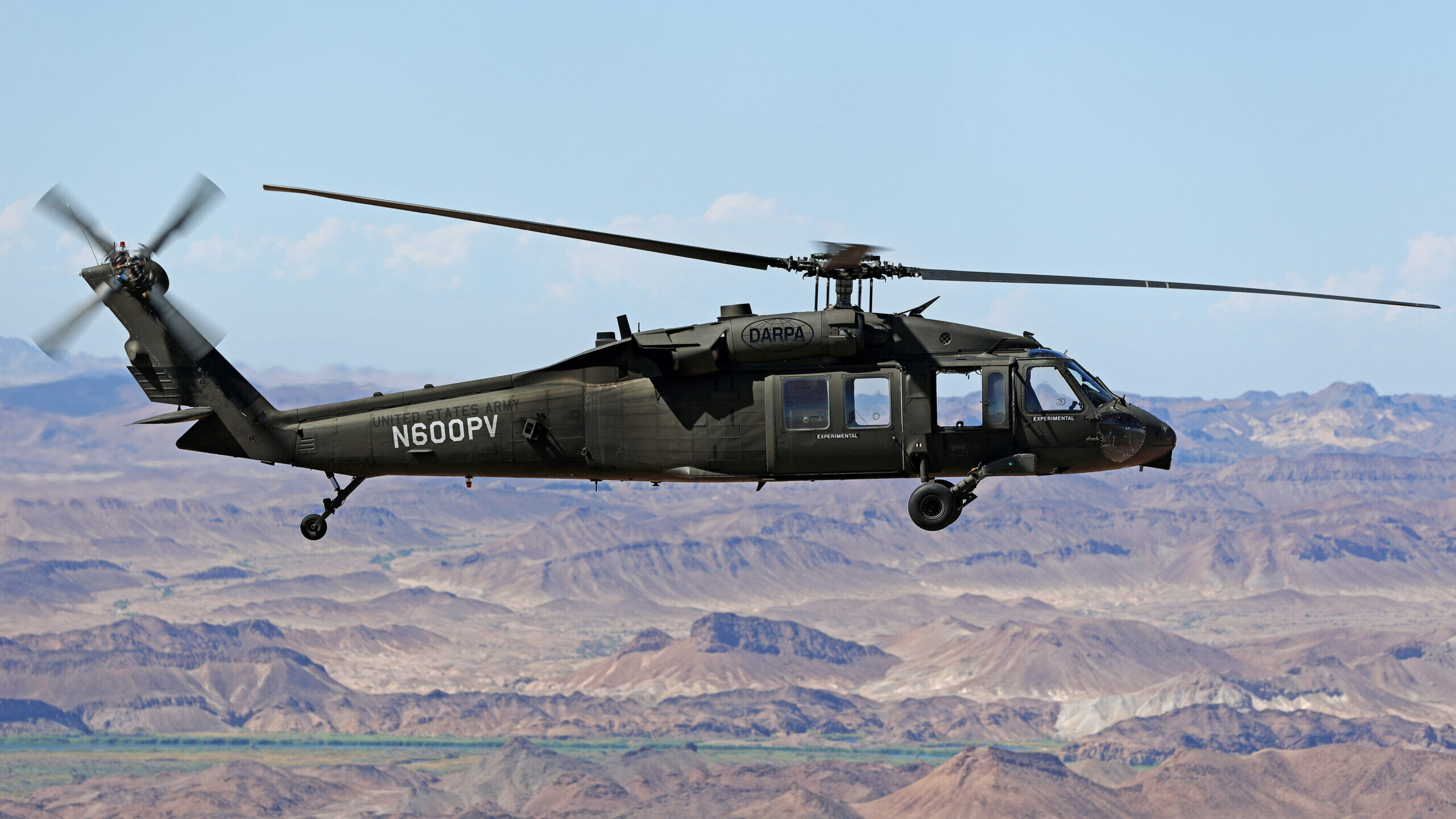Just how the UH 60's Adaptability Sustains Both Combat and Altruist Initiatives
Just how the UH 60's Adaptability Sustains Both Combat and Altruist Initiatives
Blog Article
UH-60: Advancements in Modern Helicopter Layout
The UH-60 helicopter stands as a standard in modern-day air travel, showcasing considerable advancements in design and modern technology that cater to the progressing demands of armed forces procedures. As we discover the development and crucial technologies of the UH-60, it ends up being vital to consider exactly how these growths affect not only present applications but additionally the future landscape of helicopter style.

Development of the UH-60
The development of the UH-60 Black Hawk helicopter represents a considerable milestone in aerospace design and army aviation. Presented in the late 1970s, the UH-60 was created by Sikorsky Aircraft to meet the United States Military's need for a flexible utility helicopter efficient in performing a range of objectives. Its style stressed rate, resilience, and maneuverability, setting new requirements for functional performance.
The UH-60 includes an unique four-blade blades system, which boosts lift and stability, permitting it to operate effectively in varied settings. Its airframe is created from advanced composite materials, adding to a decrease in weight while keeping structural integrity. The helicopter's style likewise includes improved aerodynamics, which boosts gas efficiency and boosts array.
For many years, the Black Hawk has actually undertaken several upgrades to boost its capacities, including enhanced engines, progressed trip control systems, and modular systems for simple maintenance and adaptability. The helicopter's capability to do missions varying from army transportation to medical evacuation has strengthened its role as a backbone of U.S. armed forces procedures. The UH-60 Black Hawk remains an archetype of how technology in helicopter style can substantially influence army effectiveness and operational flexibility.
Advanced Avionics Solutions
Innovations in avionics systems have actually transformed the capabilities of contemporary helicopters like the UH-60 Black Hawk, enhancing operational efficiency and situational recognition (UH 60). The combination of innovative avionics enables enhanced flight, navigating, and communication monitoring, making the UH-60 much more versatile in varied objective profiles
One of the vital functions is the sophisticated electronic cockpit, which uses multifunction screens that offer real-time data, guaranteeing pilots have instant accessibility to critical trip info. This streamlining of details reduces pilot work and boosts decision-making procedures during complex operations. Additionally, the consolidation of GPS and inertial navigation systems enables accurate positioning and course preparation, improving goal implementation in difficult settings.
Additionally, progressed avionics systems improve interaction capacities through protected information web links and voice communication systems, permitting seamless sychronisation with ground pressures and various other aircraft. The integration of automatic flight control systems additionally adds to improved stability and control, particularly in negative weather conditions or throughout low-altitude maneuvers.
Engine and Efficiency Enhancements
Engine efficiency in modern-day helicopters has taken a significant leap forward, driven by advancements that enhance performance, dependability, and power. At the center of these developments is the adoption of even more effective turboshaft engines, particularly those using advanced materials and innovations that allow greater temperature tolerances and raised thrust abilities. The UH-60 Black Hawk, for example, uses the T700-GE-701C engine, which includes a dual-channel, full-authority electronic engine control system. This system enhances performance while maximizing gas usage and decreasing maintenance demands.
Additionally, the combination of engine wellness tracking systems allows for you could try this out real-time diagnostics and anticipating upkeep, substantially improving operational integrity. These systems not only sharp crews to possible issues prior to they become critical however likewise facilitate extra reliable maintenance organizing, consequently lowering downtime.

Materials and Structural Innovations
Recent advancements in products and architectural style have revolutionized contemporary helicopter construction, enhancing both efficiency and toughness. The introduction of sophisticated composite materials, such as carbon fiber strengthened polymers, has actually significantly minimized weight while keeping architectural honesty. This change not only enhances fuel performance however additionally raises payload capability, enabling helicopters like the UH-60 to do even more varied missions.
In addition, innovations in aluminum alloys from this source and titanium parts have added to improved resistance to deterioration and exhaustion, extending the life expectancy of vital airframe components. The tactical use these materials has brought about a decrease in maintenance needs and enhanced overall operational preparedness.

Moreover, the assimilation of computer-aided design (CAD) and additive production innovations has actually made it possible for much more light-weight frameworks and complex geometries, maximizing the wind resistant performance of helicopter styles. These improvements promote quick prototyping and production, allowing makers to react promptly to progressing goal demands.
Security and Survivability Attributes
Safety and survivability features in modern-day helicopter design have actually become paramount, mirroring the raising needs for objective performance in difficult atmospheres. The UH-60 Black Hawk, a notable instance, integrates sophisticated technologies to boost crew and traveler protection.
The helicopter additionally uses a ballistic defense system, that includes armored staff seats and vital systems protecting, minimizing susceptability to tiny arms fire and shrapnel. Enhanced situational awareness is attained with innovative avionics and sensor modern technologies, permitting pilots to discover and stay clear of dangers effectively.
Additionally, the combination of redundancy in essential systems-- such as double engines and multiple trip control networks-- guarantees ongoing operation also if one system look at this web-site falls short. The UH-60 is furnished with advanced emergency situation flotation protection devices, enhancing survivability in water landings. Jointly, these functions not just boost the safety and security of personnel yet additionally increase mission success rates in hostile environments, demonstrating the dedication to excellence in helicopter layout.
Final Thought
The UH-60 helicopter stands for a significant improvement in modern air travel innovation, integrating innovative materials, innovative avionics, and robust safety functions. Its development mirrors a dedication to enhancing efficiency and operational efficiency while making sure pilot and team survivability. The assimilation of light-weight composites and advanced navigation systems underscores the helicopter's versatility in different military missions. Generally, the UH-60 serves as a criteria for future advancements in helicopter style, embodying resilience and flexibility in contemporary army operations.
The UH-60 helicopter stands as a standard in modern-day air travel, showcasing considerable improvements in design and innovation that provide to the progressing demands of army procedures. As we explore the advancement and key advancements of the UH-60, it ends up being crucial to take into consideration just how these growths affect not only current applications yet also the future landscape of helicopter style.
Introduced in the late 1970s, the UH-60 was developed by Sikorsky Airplane to meet the United States Military's demand for a functional energy helicopter capable of doing a variety of missions. The UH-60 Black Hawk stays a prime example of just how advancement in helicopter design can considerably impact military effectiveness and operational adaptability.
Overall, the UH-60 offers as a criteria for future growths in helicopter style, symbolizing strength and convenience in contemporary army operations.
Report this page